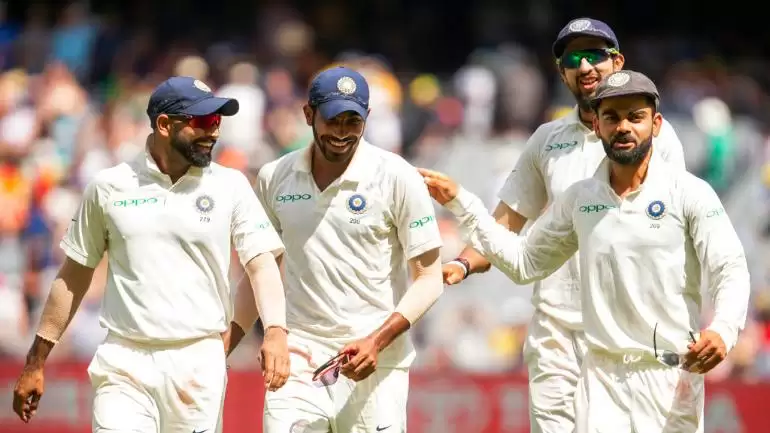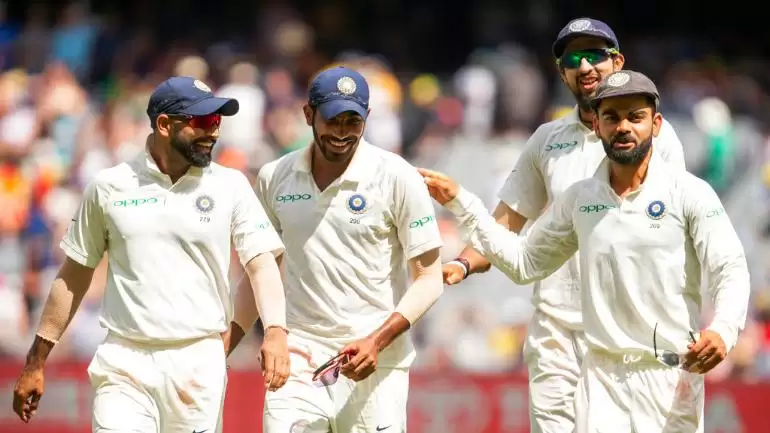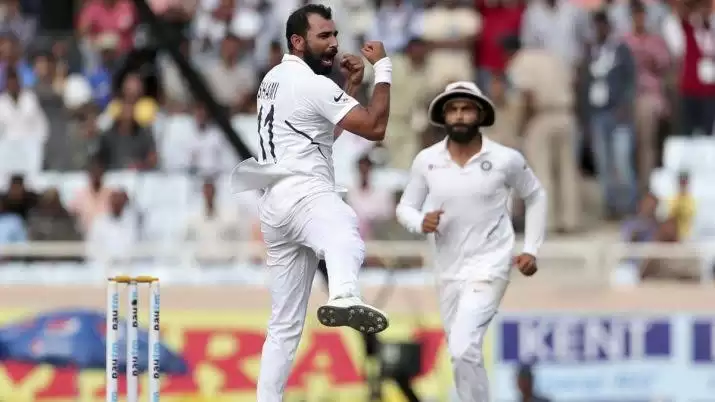
Just cast your mind back to the late 90s and early 2000s where India’s Test side were largely dependent on Sachin Tendulkar, the batsman, and Anil Kumble, the leg spinner. Along with them were fast bowlers like Zaheer Khan, Javagal Srinath and Ajit Agarkar who were wonderful servants of Indian cricket and did as well […]


Just cast your mind back to the late 90s and early 2000s where India’s Test side were largely dependent on Sachin Tendulkar, the batsman, and Anil Kumble, the leg spinner. Along with them were fast bowlers like Zaheer Khan, Javagal Srinath and Ajit Agarkar who were wonderful servants of Indian cricket and did as well as they could.
Over a period of time, India’s batting rose like never before with the emergence of Virender Sehwag, Rahul Dravid, VVS Laxman, Sourav Ganguly amongst others, but there was always a nagging feeling that India lacked a bowling attack to compete with the best.
India lacked a genuine quick bowler who, in Ravi Shastri’s words, could send shivers down the opposition’s throat. Zaheer Khan was a wonderful exponent of reverse swing. He had to remodel his game and became a fine swing bowler, but lost the pace he had when he burst onto the scene. There were the likes of Munaf Patel, Ashish Nehra, Sreesanth who all promised but for one reason or the other could never sustain either their consistency or fitness.

Fast forward to 2019 where India are able to challenge any country in the world in terms of fast bowling stocks. On pitches not overly conducive to quick bowling, the likes of Mohammad Shami, Umesh Yadav and Ishant Sharma comfortably outperformed their South African counterparts.
To see the quicks running in with that intensity and rattling the South African batsmen with short deliveries on tracks that are not very bouncy in nature was quite a sight. South Africa’s opening partnership averaged less than five and that is a testament to the fact that in general, South Africa never looked comfortable against pace and that is not something you would have seen anyone say about India’s fast bowlers often before.
Umesh Yadav, who has not played much international cricket in the last 12 months, was a revelation in the two Tests he played. He ended up 11 wickets at an average of 12.18 and Shami, who has been India’s most improved bowler across all formats had a formidable series as well and ended up with 13 wickets at 14.76.
!function(){“use strict”;window.addEventListener(“message”,function(a){if(void 0!==a.data[“datawrapper-height”])for(var e in a.data[“datawrapper-height”]){var t=document.getElementById(“datawrapper-chart-“+e)||document.querySelector(“iframe[src*='”+e+”‘]”);t&&(t.style.height=a.data[“datawrapper-height”][e]+”px”)}})}();
Take a look at this graph. This shows the percentage of wickets taken India using pace and spin since they started playing Test Cricket. Focusing specifically on this decade alone, spin has largely dominated from 2010-2017 except for the one year in 2014 when India toured England and Australia. However, there has been a genuine shift in the stakes in the last couple of years where pace has contributed to 69.65% and 57.94% of all the wickets taken.
This gives a clear indication of how much of a role India’s fast bowlers have played. Especially in the last 18 months, India’s performances overseas has improved and it is largely down to the fact that the bowling attack is able to consistently pick up 20 wickets.
In the tours to South Africa and England last year, it was the batsmen who could not do as well as you would want, whereas, the bowlers always kept India in the hunt. The Australian tour was a successful one as the batsmen backed the bowlers up and ensured India won a Test series in Australia for the first time.
!function(){“use strict”;window.addEventListener(“message”,function(a){if(void 0!==a.data[“datawrapper-height”])for(var e in a.data[“datawrapper-height”]){var t=document.getElementById(“datawrapper-chart-“+e)||document.querySelector(“iframe[src*='”+e+”‘]”);t&&(t.style.height=a.data[“datawrapper-height”][e]+”px”)}})}();
Looking at the above numbers for how the pace and spin bowlers have contributed in Indian conditions alone since 2010, it is evident that earlier in the decade, especially from 2011 to 2016, the pacers underwent a lean period. While pitches were not overly conducive to pace bowling, they still did not contribute much with spin dominating.
However, the above figure gives us an indication of how much of a role India’s fast bowlers have played even in home conditions with a significant increase in the percentage of wickets taken since 2016 after ever-reducing contributions in five years preceding that. The pacers have made a significant impact even in home conditions in the last three, and that is quite astounding to see considering the nature of pitches and quality of spinners India possess.
Apart from Shami, Umesh and Ishant, who were outstanding this series, India’s premier fast bowler, Jasprit Bumrah, is still recovering from his back injury and is expected to return to action before the end of the year.
It is also easy to forget that some very talented bowlers like Bhuvneshwar Kumar, Navdeep Saini and Khaleel Ahmed are still waiting on the wings for their opportunity. It only bodes well for Indian cricket that in the event of injuries or loss of form, India’s fast bowling options are well-stocked and Shastri can always confidently say, “Bhaad mein gaya pitch [to hell with the pitch], 20 wickets and the [World Test Championship] points are what we are after.”